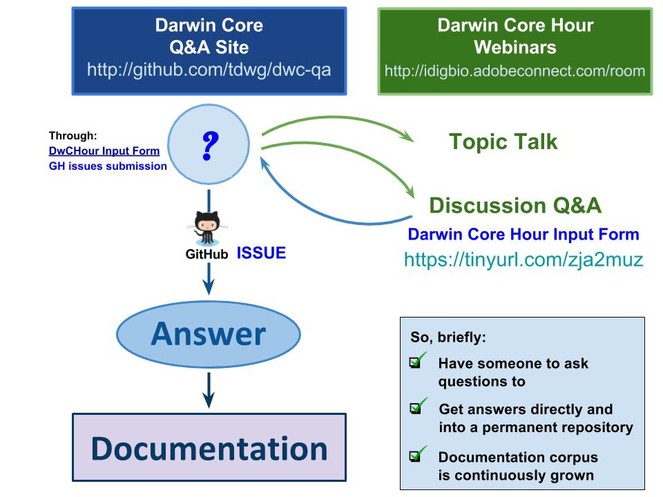|
Proceedings of TDWG : Conference Abstract
|
|
Corresponding author: Deborah L Paul (dpaul@fsu.edu), Paula F Zermoglio (pzermoglio@gmail.com), John Wieczorek (tuco@berkeley.edu), Gary J Motz (garymotz@indiana.edu)
Received: 14 Aug 2017 | Published: 14 Aug 2017
© 2017 Deborah Paul, Paula Zermoglio, John Wieczorek, Gary Motz, Erica Krimmel
This is an open access article distributed under the terms of the Creative Commons Attribution License (CC BY 4.0), which permits unrestricted use, distribution, and reproduction in any medium, provided the original author and source are credited.
Citation: Paul D, Zermoglio P, Wieczorek J, Motz G, Krimmel E (2017) Standards in Action: The Darwin Core Hour. Proceedings of TDWG 1: e20280. https://doi.org/10.3897/tdwgproceedings.1.20280
|
|
Abstract
Darwin Core
Keywords
Darwin Core standard, Darwin Core Hour, capacity building, community engagement
Presenting author
Deborah Paul, Paula Zermoglio, John Wieczorek
Acknowledgements
The authors would like to thank the biodiversity informatics community for their engagement in and contributions to this initiative to date. Work done for this program and as a result of it would not be possible without input from those actively involved in capacity building and standards development in support of biodiversity data mobilization. Our efforts are backed by many communities including iDigBio (funded by a grant from the National Science Foundation’s Advancing Digitization of Biodiversity Collections Program), VertNet, and SPNHC, among others.
References
-
Darwin Core Hour. https://github.com/tdwg/dwc-qa/wiki/Webinars
-
Darwin Core Questions & Answers Site. https://github.com/tdwg/dwc-qa
-
Darwin Core: An Evolving Community-Developed Biodiversity Data Standard.PLoS ONE7(1):e29715. https://doi.org/10.1371/journal.pone.0029715
-
The Evolution of Darwin Core Hour. https://www.idigbio.org/content/evolution-darwin-core-hour. Accessed on: 2017-7-21.
